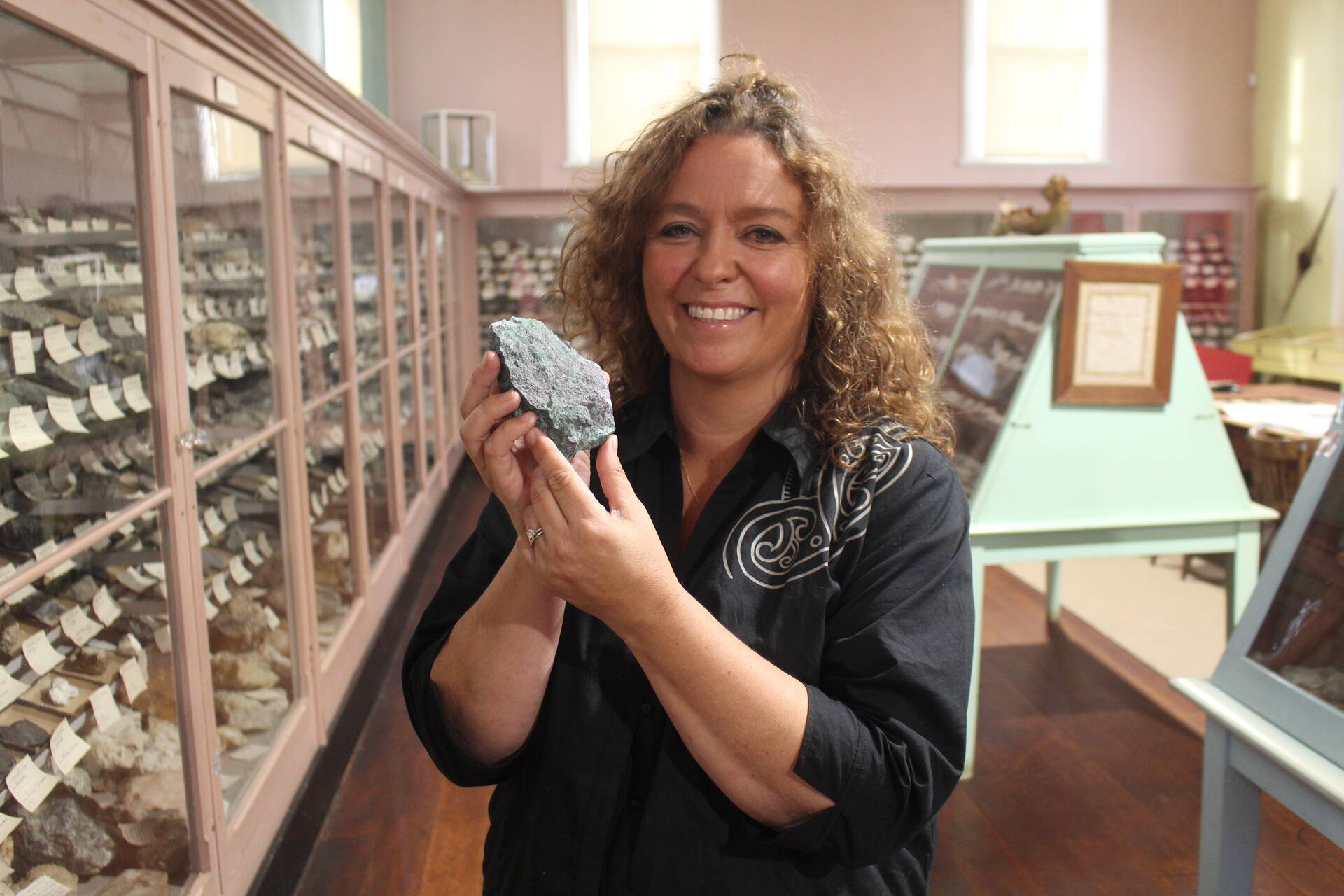A love for Thames history led Suze McElroy’s move to the School of Mines site in Thames to become the visitor services co-ordinator.
She told The Profile she was keen to share a gemstone called Goodletite or Ruby Rock, which is on display at the Cochrane St tourist attraction.
“It’s a stunning rock. Crystal shops have the shiny tumbled rich-coloured gemstones which really attract people, but when you visit our museum you really gain an appreciation for how beautiful rocks are in their raw form,” she said.
“Some are breathtaking.
“Ruby Rock might seem like an unassuming rock. It’s encased in an emerald green fuchsite that glitters all over. The real magic is inside, when sliced open it reveals its small ruby gemstones.”
“It is incredibly rare, it’s only found in one place in New Zealand in Hokitika in the Glacier Moraines. There are reports that old time miners in the 1800s even threw it away believing the rock had no value.
“It’s since been reclassified as New Zealand’s only precious gemstone. It’s one of New Zealand’s best kept secrets.”
Ms McElroy said the Ruby Rock at the Thames School of Mines was named after an assistant to renowned University of Otago professor James Gow Black, who travelled all over New Zealand in the 1800s lecturing all things gold mining. He regularly visited the Thames School of Mines, educating its students. He travelled with his assistant William ‘Wullie’ Goodlet. Ruby Rock is unofficially referred to as Goodletite after the loyal and trustworthy ‘Wullie’, who gifted the specimen we have on display to the school in honour of his relationship with Mr Black.
“It is a significant specimen in our collection. Visitors to the museum love it because it’s both unusual and uniquely ours,” Ms McElroy said.
She has also been amazed by the diversity of visitors to the School of Mines.
“We have rockhounds who are rock collectors and they come in looking for New Zealand specimens to add to their collections. They’re out in the bush, on our beaches, in streams fossicking for rock samples,” she said.
“Then we have the older gold miners with fabulous stories and who are a wealth of knowledge.
“The younger geologists’ jaws drop when they walk into the museum and see our extensive collection.”
The mineralogical museum was a fantastic learning resource for its students and still fascinated rock lovers today, she said.
The Heritage New Zealand site also had a retail offering, however, the Ruby Rock was not for sale though could be viewed by visitors.
“Since working at the Thames School of Mines I have a new appreciation for rocks, crystals and geology in general – it’s been an amazing education.”

Suze McElroy with the ruby rock at the Thames School of Mines Rock Shop. Photo: GORDON PREECE



